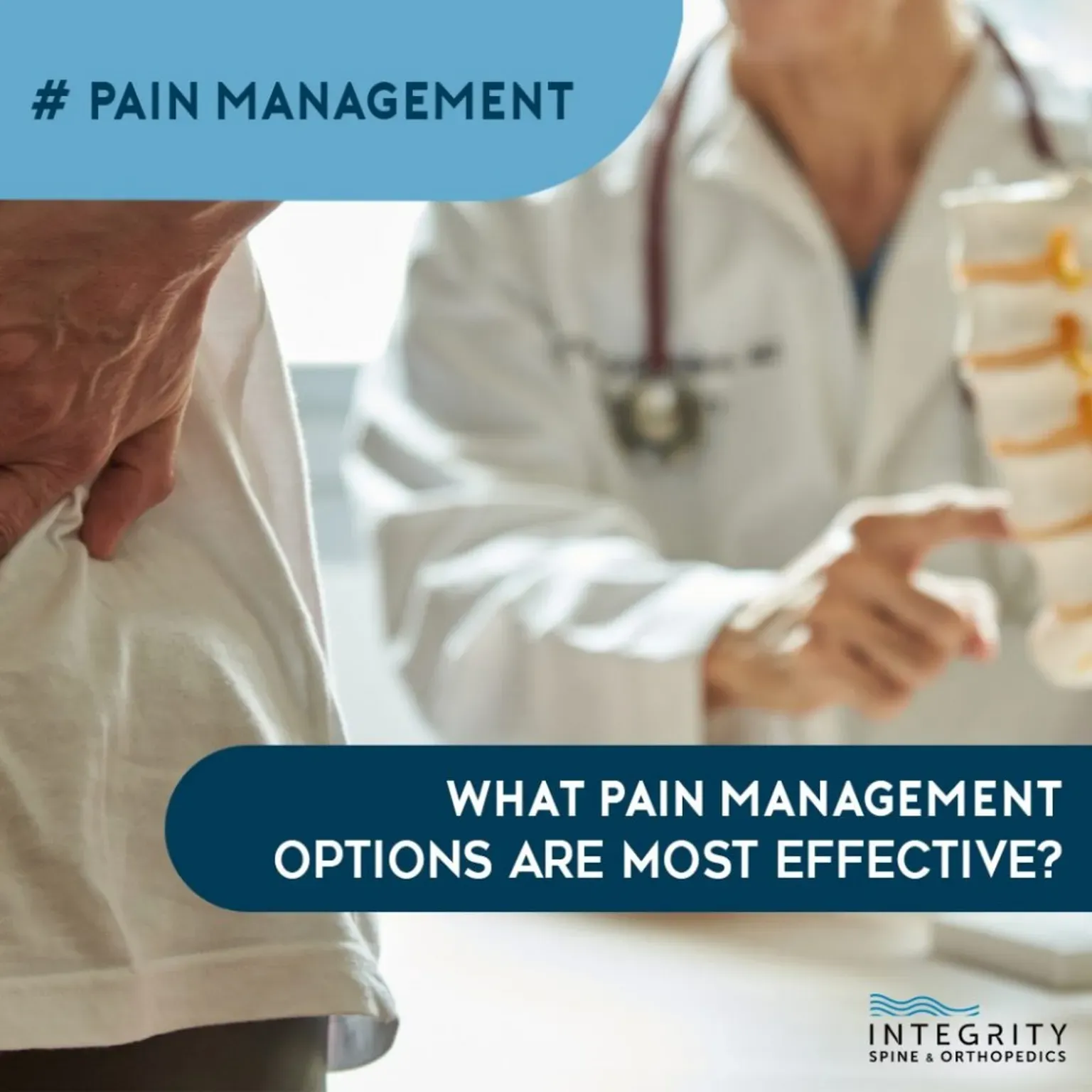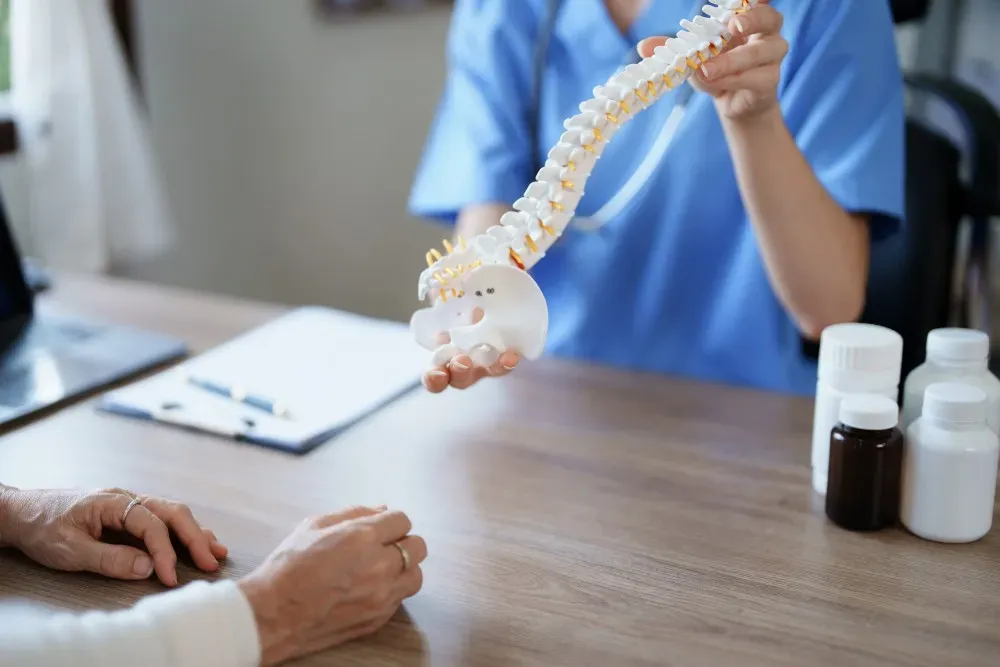Neurosurgery & Orthopedic Surgeons in Jacksonville

What Pain Management Options Are Most Effective?
Pain is an incredibly pervasive condition that affects every aspect of our lives. People living with pain often experience difficulty concentrating at work, going out and socializing, and enjoying time spent with family and loved ones.
WHAT PAIN MANAGEMENT OPTIONS ARE MOST EFFECTIVE?
Pain is an incredibly pervasive condition that affects every aspect of our lives. People living with pain often experience difficulty concentrating at work, going out and socializing, and enjoying time spent with family and loved ones. It’s no surprise that chronic pain is a leading cause of depression, anxiety and social isolation.
Back and neck pain are two of the most common types of pain experienced by millions of people in the U.S. Conditions like spinal arthritis, spinal stenosis, a herniated disc or a pinched nerve can cause debilitating pain that leads to difficulty walking, climbing stairs or performing everyday activities.
In order to live your life, you need to find a way to keep your pain under control. A pain management specialist can help you build a care plan that includes one or more treatment options for managing daily, long-term or acute pain. Know that everyone’s pain is different, so everyone’s treatment plan will look different as well. Unfortunately, there is no one, surefire cure-all for any type of pain. However, a pain management specialist will help you find the right combination of therapies to improve your quality of life.
Keep reading to learn 4 effective pain management therapies for spine and joint pain.
1. MEDICATIONS
If you have chronic pain or are recovering from an injury or surgery, medications will likely be a part of your pain management plan. Your doctor will likely start by prescribing the weakest and lowest dosage medications that effectively manage your pain and advance to stronger medications as needed.
- Acetaminophen. Acetaminophen may be the first medication your doctor recommends for mild to moderate pain from osteoarthritis, back or neck pain, or a musculoskeletal condition.
- Non-steroidal anti-inflammatory drugs (NSAIDs). Drugs like aspirin, ibuprofen and naproxen can help relieve mild to moderate pain, swelling and inflammation. They’re recommended for arthritis pain and soft tissue sprains, strains and inflammation. NSAIDs do have significant risks for bleeding, ulcers and kidney problems, so consult with your doctor before using them regularly.
- Topical solutions. Topical creams, gels and patches containing pain-relieving medications can be placed directly over sore and achy muscles, soft tissues and arthritic joints for mild to moderate relief.
- COX-2 inhibitors. Celecoxib (Celebrex) is a prescription medication. It’s a type of NSAID that helps control mild to moderate pain while reducing side effects like bleeding and ulcers. It treats the same types of pain as over-the-counter NSAIDs, but it may be a better choice if you have risk factors for long-term use of NSAIDs.
While acetaminophen and NSAIDs can be very effective for managing mild aches and pains, they have a limit to how much pain they can control. If you have moderate to severe pain, your doctor may prescribe a stronger medication for relief.
- Antidepressants. Antidepressants have proven effective at treating chronic pain for conditions like arthritis, low back pain and nerve pain, even if you don’t have depression. Tricyclic antidepressants are the most common and effective type used for pain relief. Your doctor may start you on a lower dose and adjust as necessary to reduce side effects you may experience.
- Muscle relaxants. Skeletal muscle relaxants are approved for short-term use to treat painful muscle spasms and back pain. These medications have very serious side effects, especially for older adults. They’re most effective as a short-term treatment to manage acute, severe pain.
- Steroids. Oral corticosteroids are powerful anti-inflammatories that can provide significant relief for severe low back and neck pain, herniated discs and arthritis. Oral steroids have serious side effects when used long term. They’re most effective as a short-term treatment to manage acute, severe pain or an arthritis flare-up.
Opioids are a last-choice option for controlling severe pain. They are highly addictive and many doctors believe the negative side effects of opioids outweigh the pain-relieving benefits. Your doctor may prescribe a short, low-dosage course for severe traumatic or breakthrough pain, but the risks are extremely high for long-term use.
2. INJECTIONS
Injections can be an effective treatment option to relieve both acute and chronic pain. The type of injection that may be beneficial to you depends on the kind of pain you’re experiencing. Injections can be used for diagnostic or therapeutic purposes.
- Cortisone injection. A cortisone injection uses a steroid medication to reduce pain, inflammation, swelling and irritation around an arthritic joint or a compressed nerve root in the spine.
- Facet joint injection. A facet joint injection uses an anesthetic and a steroid medication to reduce pain, swelling and inflammation in the facet joints of the spine. The facet joints can become painful and irritated from arthritis, a back injury or a neck injury.
- Nerve blocks. Nerve blocks use an anesthetic to numb nerves in the spine and block the transmission of pain signals. They can help reduce pain and inflammation caused by arthritis, neck pain, low back pain, herniated disc pain and sciatica. Surgical nerve blocks involve destroying pain-causing nerves for permanent pain relief.
Many injections — with the exception of surgical nerve blocks — provide only temporary relief. Some people experience as little as a few days of relief, while some injections last for several months or a year. The primary purpose of injections is to reduce pain and inflammation and allow your body time to start healing. For long-term pain management, injections are most effective when they’re used in conjunction with other treatment methods, like physical therapy. They buy you time to strengthen your muscles and joints and improve mobility while your pain is under control.
3. PHYSICAL THERAPY AND EXERCISE
Physical therapy is a very effective treatment option for managing chronic pain. During your sessions, a therapist will work with you to increase your muscle and joint strength and improve flexibility, range of motion, balance, alignment and endurance. Additionally, a therapist will show you specific exercises that can help relieve pain and pressure for conditions like low back pain, arthritis, spinal stenosis and sciatica.
Physical therapy improves your ability to move, function, complete daily activities and exercise on your own at home. Physical therapy exercises also help reduce pain and inflammation. At home, maintaining a regular exercise routine can help you manage chronic pain and retain an active lifestyle for as long as possible. There are several great exercise options that are low-impact on your joints, including walking, swimming, water aerobics, ellipticals, yoga and tai chi.
Unfortunately, we’ve seen too many patients who don’t incorporate exercise and movement into their lives because they’re in pain. However, prolonged immobilization and living a sedentary lifestyle can actually lead to more pain, stiffness, muscle weakness, and bone mass loss. Exercise — combined with a weight management program to achieve a healthy, stable weight — is an effective pain management option that can help reduce your need to take medications as frequently or at high dosages for pain.
4. MINIMALLY INVASIVE SURGERY
Sometimes, non-surgical treatments aren’t enough to completely manage your pain. If you’re suffering pain and symptoms from a herniated disc, spinal stenosis or a pinched spinal nerve, minimally invasive spine surgery can be a safe and effective long-term treatment option.
At Integrity Spine and Orthopedics, our board-certified surgeons use minimally invasive techniques to repair or remove damaged spinal discs, relieve pressure on compressed nerves and create more space in the spine for nerves to move freely. Minimally invasive surgeries require smaller incisions, cause less muscle and tendon damage and have a shorter recovery time over traditional spine surgeries. Many of our patients are able to return to work and normal activities within a few days to a few weeks after surgery.
Minimally invasive spine surgery can provide long-lasting pain relief and improved mobility in the spine and joints.
INTEGRITY SPINE AND ORTHOPEDICS TREATS ACUTE AND CHRONIC PAIN
If you’re experiencing acute or chronic back, neck or joint pain, please call our Jacksonville, FL clinic. Integrity Spine and Orthopedics offers several services to treat a range of spine and joint conditions. We provide exceptional orthopedic care, pain management and minimally invasive spinal procedures. Our team of orthopedic surgeons is board certified and fellowship trained in outpatient, minimally invasive spine surgeries.
If you’re suffering from pain, reduced mobility and a decrease in your quality of life, call us or reach out online to schedule an appointment.




